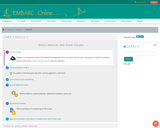
G4M4: Angle Measure and Plane Figures. Contains 16 Lessons.
- Subject:
- Mathematics
- Material Type:
- Module
- Provider:
- EMBARC.Online
- Date Added:
- 08/13/2019

G4M4: Angle Measure and Plane Figures. Contains 16 Lessons.

This 4 unit of geometry lessons explores parallel, perpendicular, and intersecting lines through 1 hands-on activity and 2 worksheets.

This 4 unit of geometry lessons explores 2D and 3D shapes through 4 worksheets.

This 4 unit of geometry lessons explores circles and angles through 5 hands-on activities and 6 worksheets.

In this lesson, students will identify and draw points, lines, line segments, rays, and angles and recognize them in various contexts and familiar figures.
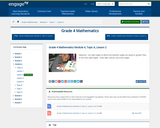
In this lesson, students will use right angles to determine whether angles are equal to, greater than, or less than right angles. Draw right, obtuse, and acute angles.

In this lesson, students will identify, define, and draw perpendicular lines.
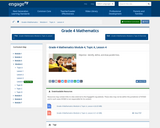
In this lesson, students will identify, define, and draw parallel lines.

In this lesson, students will define and construct triangles from given criteria. Explore symmetry in triangles.
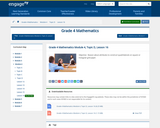
In this lesson, students will reason about attributes to construct quadrilaterals on square or triangular grid paper.
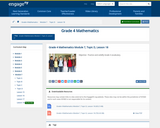
In this lesson, students will practice and solidify Grade 4 vocabulary.

This short video and interactive assessment activity is designed to teach third graders about determining whether lines are perpendicular.

This short video and interactive assessment activity is designed to teach second graders about identifying parallel and perpendicular lines.
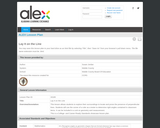
Students explore their surroundings to locate and prove the presence of perpendicular lines. Students will use the corner of a ruler as a tester to determine right angles contained in classroom items. It can be included in a unit on geometry and measurement.

In this activity, students will be introduced to making line segments with a geoboard.

In this activity, students will be introduced to making line segments with a geoboard.

In this lesson, students will identify angles found in the real world and classify and draw them. Then they will create a book where they will record angles found within their environment.
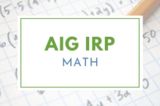
In this task, students will apply their knowledge of polygons and their properties to create “New-Fangled Tangram” puzzles. Students will need to pull from their understanding that polygons may have shared attributes, utilize visual-spatial skills, and employ a variety of problem solving strategies. Additionally, students will need to prove that their puzzles were designed correctly by using a variety of tools and apply fourth grade knowledge of polygons. This lesson was developed by NCDPI as part of the Academically and/or Intellectually Gifted Instructional Resources Project. This lesson plan has been vetted at the state level for standards alignment, AIG focus, and content accuracy.
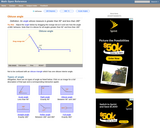
An interactive applet and associated web page that demonstrate obtuse angles (those between 90 and 180 deg). The applet presents an angle (initially obtuse) that the user can adjust by dragging the end points of the line segments forming the angle. As it changes it shows the angle measure and a message that indicate which type of angle it is. There a software 'detents' that make it easy capture exact angles such as 90 degrees and 180 degrees The message and angle measures can be turned off to facilitate classroom discussion. The text on the page has links to other pages defining each angle type in depth. Applet can be enlarged to full screen size for use with a classroom projector. This resource is a component of the Math Open Reference Interactive Geometry textbook project at http://www.mathopenref.com.

This course was created by the Rethink Education Content Development Team. This course is aligned to the NC Standards for 4th Grade Math.